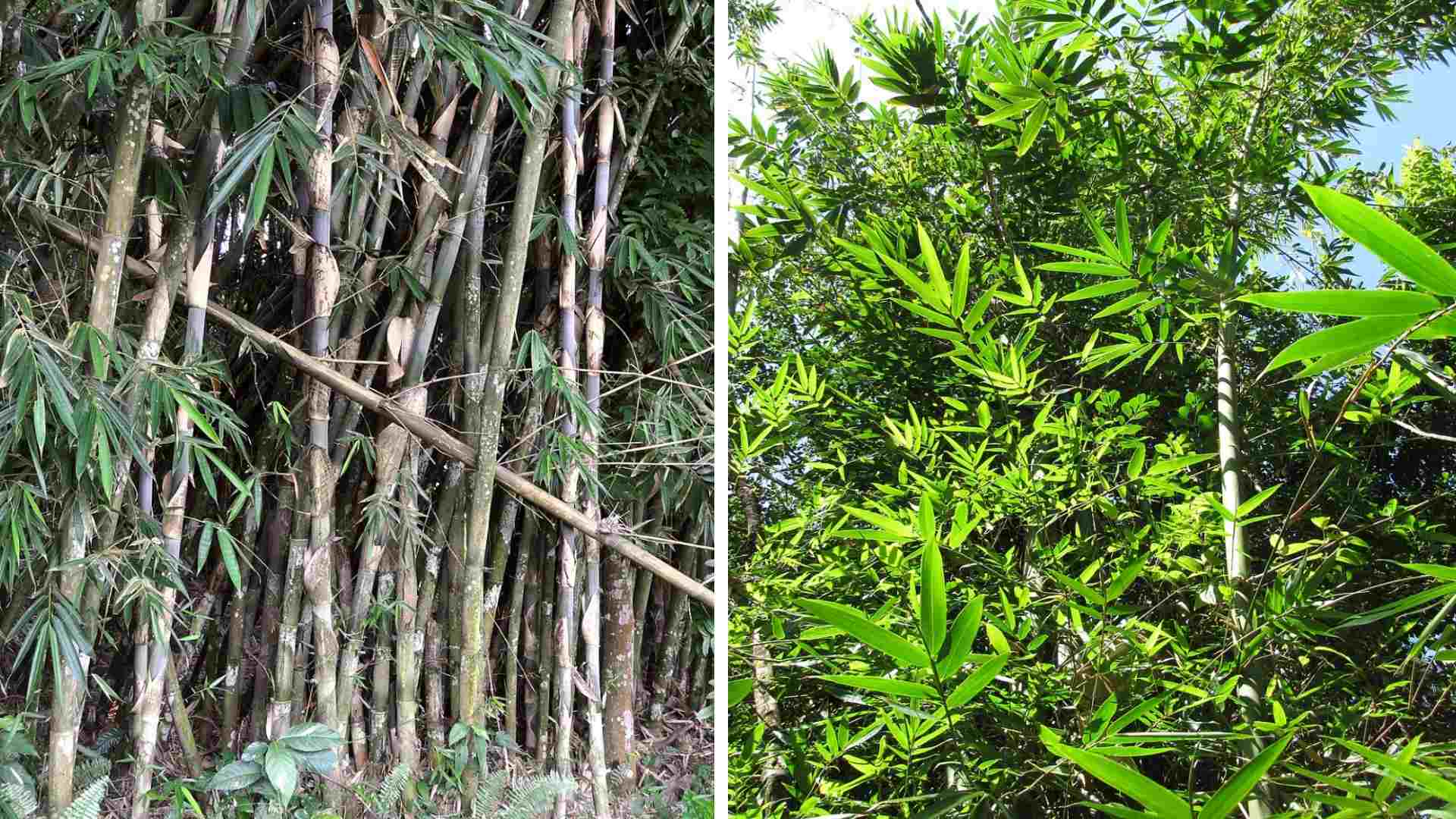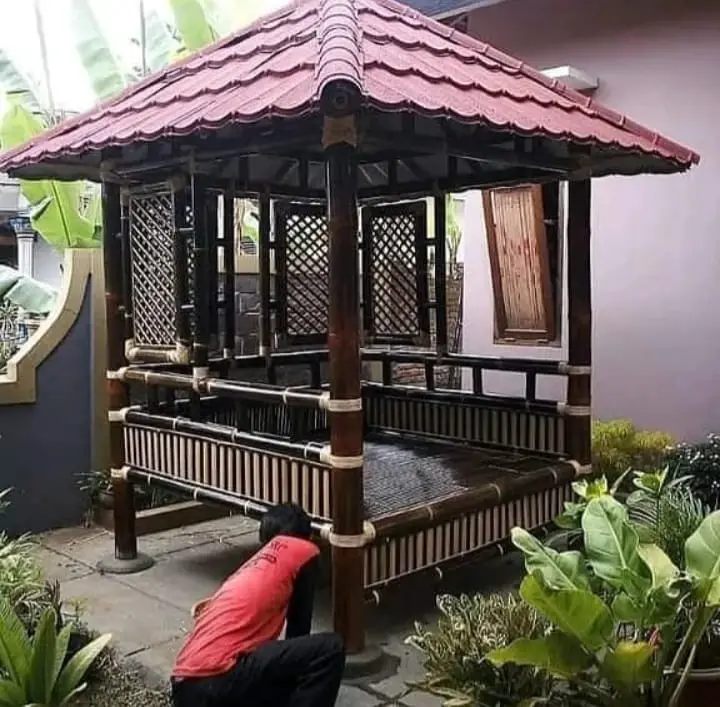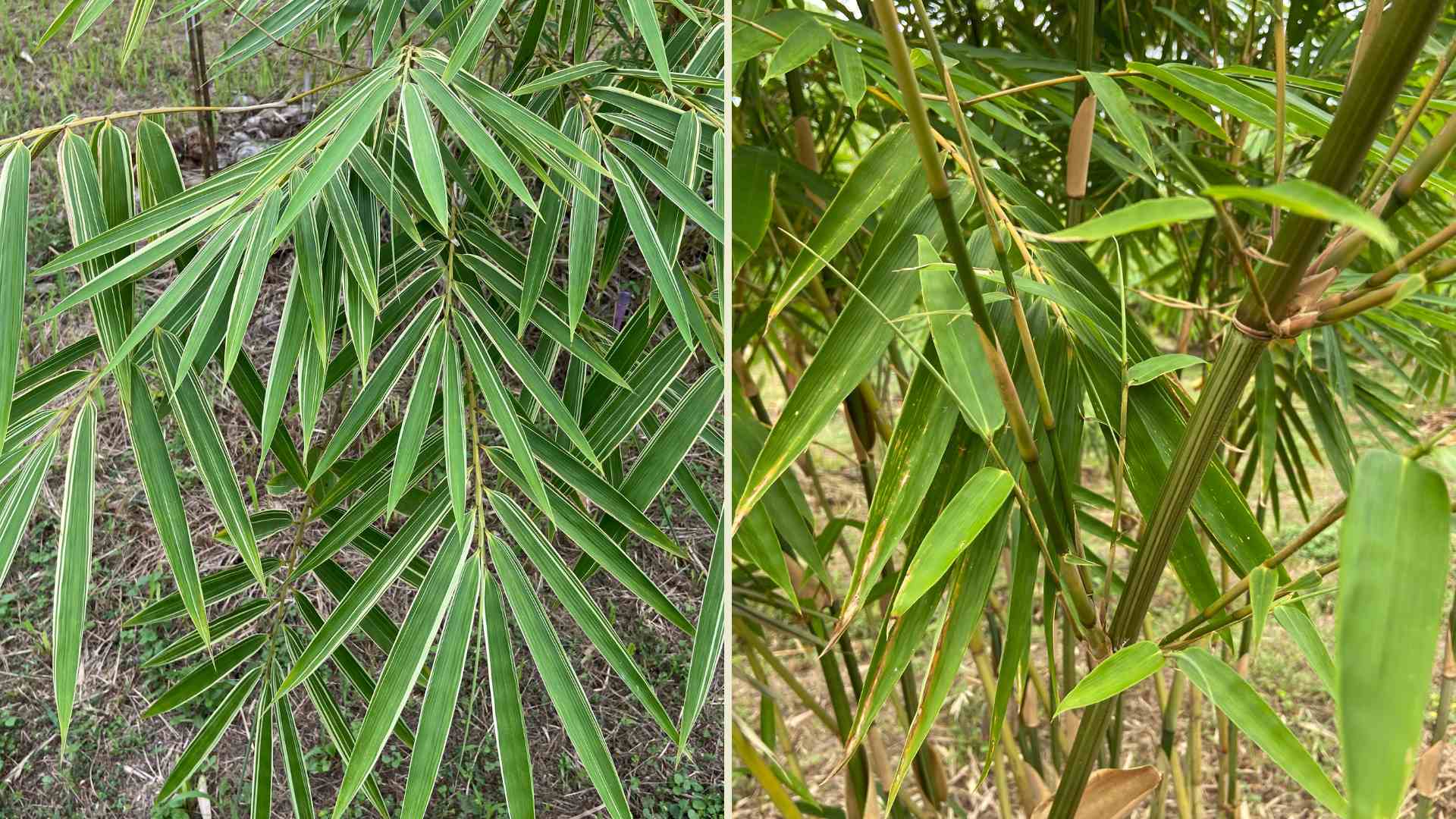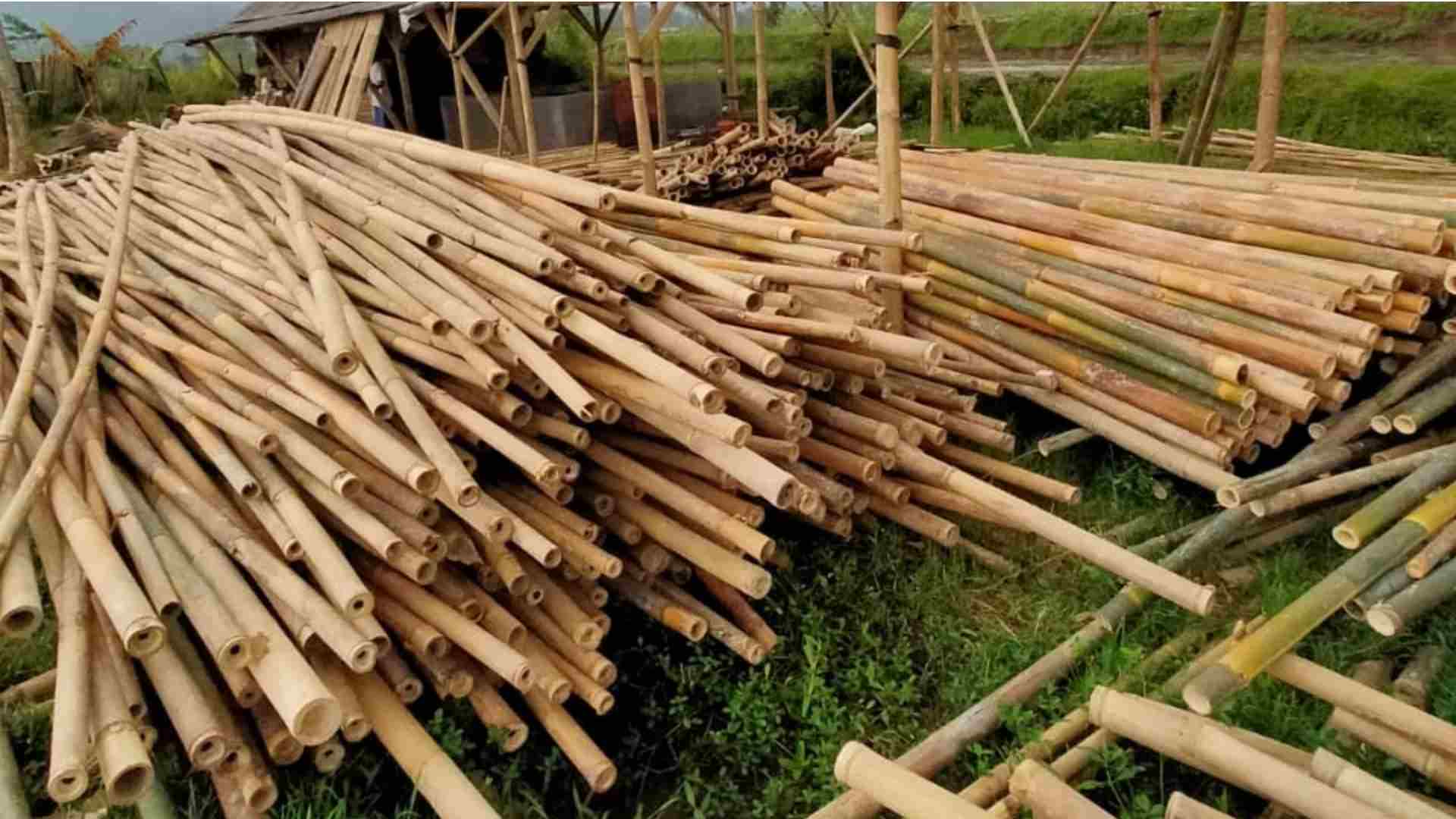When it comes to bamboo, a lot of people hold to the idea that bigger means better. There are plenty of other traits to consider, especially when selecting an ornamental variety for your garden, but there’s something amazing about those huge varieties that stretch 60 or 70 feet into the sky. In the tropics of the Far East, many of these tremendous bamboos, so impressive in size, belong to the genus Gigantochloa.
The genus Gigantochloa includes about seventy species of giant, tropical, densely clumping bamboo, indigenous to Southeast Asia and Indonesia. Although giant, as the name suggests, these varieties are generally not as large as the massive members of the genus Dendrocalamus. The species G. apus and G. atter are especially popular in Java and Bali for light construction, furniture and crafts.
NOTE: This article first appeared in May 2022, most recently updated in July 2024.

Characteristics of Gigantochloa bamboo
The name alone will tell you that these bamboo varieties are gigantic. In their native habitat, the culms typically grow 50 to 70 feet tall, and up to about 4 inches or more in diameter. Collectively, these are probably the second-largest members of the bamboo family, slightly outdone by their cousins in the genus Dendrocalamus.
Both of these genera are native to Southeast Asia and Indonesia. They grow in fairly tight clumps and require a tropical climate. They may survive occasional frosts, as in Florida or Southern California, but they will not thrive in those conditions or reach their optimal size.
We believe that most Gigantochloa originated in what are now Malaysia and Myanmar. Over time, they have spread and are now cultivated more broadly, particularly important in Java and Bali. But on a global scale, these species are not as widely used as Dendrocalamus asper, for example.
You can often identify a bamboo, at least the genus, by the pattern of its branches. These two genera both form multiple branches at the nodes, with one primary or dominant branch. This is similar to the genus Bambusa. The branches don’t usually appear until several feet up on the culms.
The leaves of Gigantochloa tend to be quite large, creating a thick canopy. They can sometimes be over a foot long and a few inches wide.
Aerial roots frequently form at the base of the larger culms. These are more pronounced than those of the Dendrocalamus varieties. The culms sheaths of Gigantochloa are also more persistent, clinging to the poles for a longer period of time. This is another distinguishing characteristic. The hairy bristles on young culm sheaths can be irritating to the skin, producing a similar sensation as stinking nettle.

Popular species of Gigantochloa
Among the roughly 70 species in the genus Gigantochloa, these are the most popular and important for ornamental and commercial use.
Gigantochloa apus
Also called Tali Bamboo or String Bamboo, G. apus is considered the most important bamboo species on the Indonesian island of Java. Although it probably arrived there from Myanmar (Burma). A timber variety, it typically grows about 50 or 60 feet tall and 4 or 5 inches thick. It is widely used for construction and furniture making.
Gigantochloa atroviolacea
Locally referred to as Wulung Bamboo, or better known as Java Black Bamboo, the dark purplish-black culms of this giant tropical species make it especially popular as an ornamental. Keep in mind, this species requires a climate where freezing is extremely rare or unheard of. In the United States, think Hawaii or Key West. But it is relatively drought-tolerant. Smaller than its cousins, it might only grow 25 or 35 feet tall, with 3-inch thick culms. The rich color makes Java Black an interesting material for furniture and other crafts.
Check out my article on Black Bamboo to learn more.

Gigantochloa atter
Locally called Temen Bamboo, but better known as Giant Atter, this massive clumper is comparable in size to G. apus. The leaves are somewhat larger, however. It’s also notable for being one of the only edible species of Gigantochloa. Tasty young shoots have earned it the nickname “Sweet Bamboo,” which can be confusing, because that name is sometimes applied to Dendrocalamus asper, as well. This variety is also popular for crafts and light construction.

Gigantochloa balui
A more exotic species with multiple variants, as pictured above. The one on the left has variegated leaves, with white edges. The other, on the right, has a striped stem with light green and purple highlights.
Gigantochloa levis
Commonly cultivated in the Philippines and Southeast Asia, G. levis is useful for furniture, light construction, and a variety of crafts. Smooth upright culms can grow 50-60 feet tall and 4 to 5 inches in diameter. Shoots are edible and emerge with culm sheaths covered with dark, hairy bristles.

Gigantochloa sp. ‘Rachel Carson’
One of the most popular ornamental species in this genus, this cultivar has colorfully striped leaves and culms, sometimes white and even pink. Canes grow a modest 25 feet tall and provide a good privacy screen.
Gigantochloa scortechinii
This rare species is only known to grow on the Malaysian peninsula. It’s a mighty, towering variety, with slender, upright culms 40 to 50 feet tall but only a couple inches in diameter. The young culms, tightly wrapped in their culms sheaths, have a striking appearance with a powdery blue color. (Refer to the feature image at the top of the article.) Gigantochloa scortechinii is one of the ancestors of Gigantocalamus malpenensis, an exotic intergeneric hybrid endemic to the same region.

Gigantochloa wrayi
Another compact member of the genus, G. wrayi grows about 20 to 30 feet tall with slender culms, just a couple inches thick. The tight clump has a small footprint, making it a popular ornamental, at least in tropical climates. Foliage is bright green and thick, resulting in a lovely centerpiece or an effective privacy screen.

Go big or go home
If you like big bamboo, then you’re not alone. It can be a magnificent thing to behold. Take a look at some of these related articles to learn more.
FEATURE IMAGE: Gigantochloa scortechinii in the jungle of Malaysia. Photo by Fred Hornaday.




















